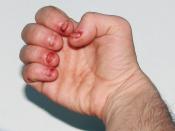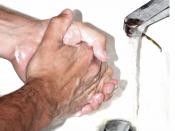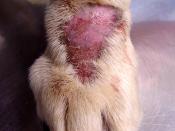Obsessive Compulsive Disorder
�
Obsessive Compulsive Disorder (OCD), not to be confused with Obsessive Compulsive Personality Disorder, is a type of anxiety disorder characterized by intrusive, persistent unwanted thoughts or images-obsessions, and repetitive and excessive behaviors--compulsions (Sasson et al., 2005). Should these behaviors and obsessive thoughts persist, a person suffering from OCD may observe a rapidly deteriorating quality of life and experience significant difficulty with everyday functioning (Nacash et al., 2011). While the precise age of onset for OCD typically varies, the general appearance of the disorder is common in adolescence or young adulthood. However, early-onset OCD affects over 30% of adults and its observed symptoms are generally much more severe than those seen in other patients; additionally, as the name suggests, the symptoms are also experienced throughout the length of a person's childhood (Winkler, 2008).
Although the actual cause of OCD remains unclear, research evidence suggests that there is a neurobiological mechanism contributing to the onset and persistence of the disorder (National Institute of Mental Health, 2008).
This conclusion was reached by studying the brain activities of individuals undergoing treatment by way of anti-depressants, drugs that are classified as selective-serotonin reuptake inhibitors (SSRIs) (Understanding Obsessive Compulsive Disorder, 2003). Because patients receiving SSRIs generally respond positively to the drugs, another cause of OCD has been linked to insufficient serotonin levels. In addition to biological factors, OCD can also arise from an overwhelming amount of stress, such as increased responsibility due to a job promotion or new puppy, or from significant, life-changing losses, such as the trauma associated with sexual assault or devastation of losing a loved one (Sasson et al. 2005). The most common types of obsessions revolve around the fear of contamination or getting dirty. The most common compulsions also revolve around cleanliness, such as washing/cleaning, and organization...


